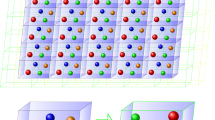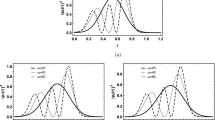Abstract
We show that the paramagnet-spin glass transition can be described in the Edwards-Anderson model using critical-dynamics methods and taking the ultrametric topology of the temporal space into account. In the framework of the suggested approach, we derive the Vogel-Fulcher relation for the system relaxation time. We prove that the fluctuation-dissipation theorem holds for the given model if there is no relaxation-time hierarchy.
Similar content being viewed by others
References
A. N. Vasil’ev, Quantum-Field Renormalization Group in the Theory of Critical Behavior and Stochastic Dynamics [in Russian], St. Petersburg Inst. Nucl. Phys. Press, St. Petersburg (1998); English transl., CRC Press, Boca Raton (2004).
V. S. Dotsenko, Phys. Usp., 38, 457–496 (1995).
P. C. Hohenberg and B. I. Halperin, Rev. Modern Phys., 49, 435–479 (1997).
A. W. W. Ludwig, Nucl. Phys. B, 330, 639–680 (1990).
S. L. Ginzburg, Irreversible Phenomena in Spin Glasses [in Russian], Nauka, Moscow (1989).
Author information
Authors and Affiliations
Additional information
__________
Translated from Teoreticheskaya i Matematicheskaya Fizika, Vol. 147, No. 2, pp. 328–336, May, 2006.
Rights and permissions
About this article
Cite this article
Vasin, M.G. Description of the paramagnet-spin glass transition in the Edwards-Anderson model using critical-dynamics methods. Theor Math Phys 147, 721–728 (2006). https://doi.org/10.1007/s11232-006-0074-9
Received:
Issue Date:
DOI: https://doi.org/10.1007/s11232-006-0074-9




